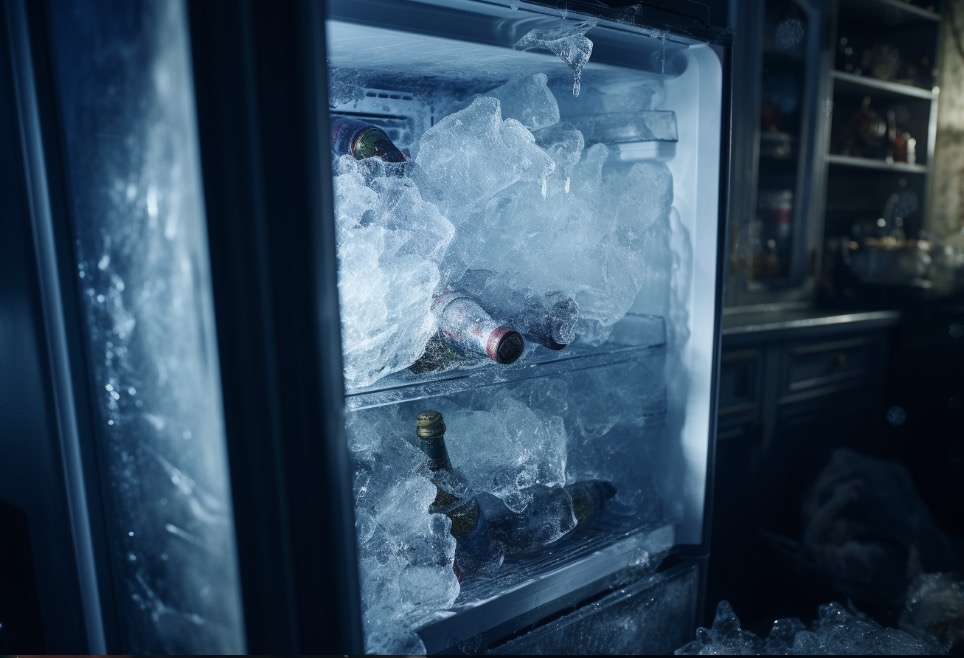As a professional brewer and microbiologist, I’ve spent countless hours studying, researching, and of course, enjoying drinks of all kinds.
Over the years, I’ve heard the question, “How long should I leave this drink in the freezer?” more times than I can count. The short answer?
Most drinks take about 30 minutes to an hour in the freezer to get cold, but this can vary widely based on the type of drink and its alcohol content.
However, the full answer is a lot more nuanced, which is why I’ve put together this comprehensive guide to help you understand the science and art behind chilling your beverages to perfection.
The Science of Cooling Down a Drinks
Cooling a beverage involves the transfer of heat energy from the warmer substance (the beverage) to the cooler substance (the surrounding environment).
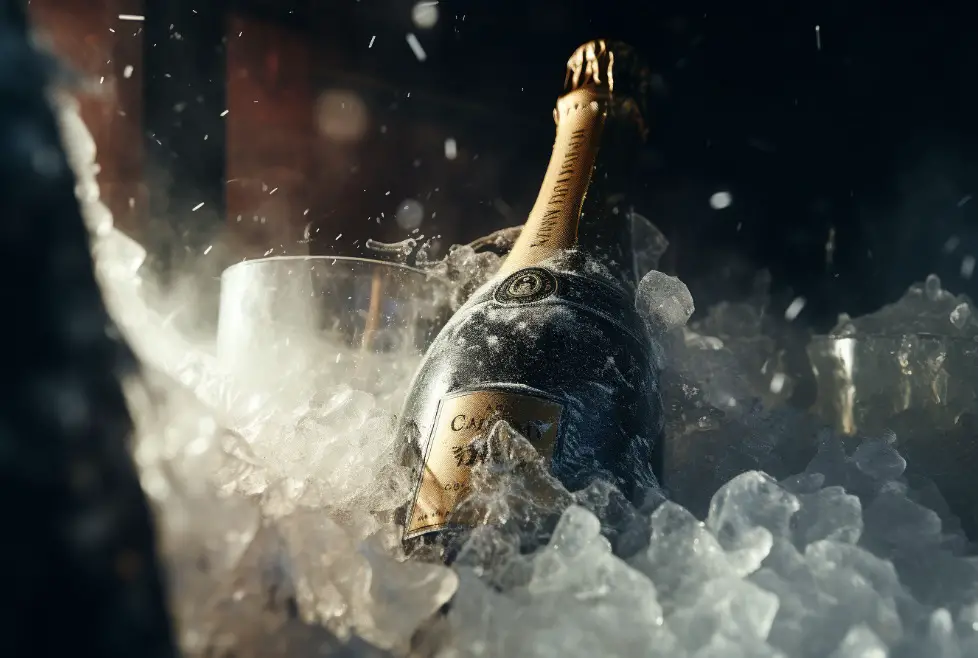
The rate of this heat transfer depends on a few factors:
- The Temperature Difference: The greater the difference in temperature between the beverage and its surroundings, the faster heat will be transferred.
- Conductivity: Different substances have different capacities to conduct heat. In general, solids and liquids are better conductors of heat than gases.
- Phase Changes: When a substance changes its phase (e.g., from solid to liquid or liquid to gas), it absorbs or releases heat. For instance, when ice melts, it absorbs heat from its surroundings.
Wine: More Than Just Red or White
Wine is a drink of finesse, history, and taste. There are various types, from red and white to rosé and sparkling. Each has its unique characteristics, and each requires different chilling techniques.
- Red Wine: While many believe that red wine should be consumed at room temperature, it’s actually best enjoyed slightly chilled, between 60-68°F (15-20°C). A quick 15-20 minutes in the freezer should suffice. Overchilling can mute the flavors and aromas.
- White Wine: White wines shine at a cooler temperature, typically between 50-60°F (10-15°C). If you’re in a rush, popping it in the freezer for 30 minutes to an hour should do the trick.
- Rosé and Sparkling Wine: These wines are best enjoyed quite cold, around 40-50°F (5-10°C). This will usually require about 1-2 hours in the freezer.
As a side note, I’ve had many tasting sessions where wines were served at varying temperatures. The intricacies and depth of flavors change noticeably with temperature.

A slightly chilled red can emphasize its fruitiness, while a too-cold white might seem less aromatic.
Beer: It’s Not Just About the Cold
Ah, beer, a personal favorite. The ideal temperature can vary significantly:
- Lagers and Pilsners: Best served cold, around 38-45°F (3-7°C). Typically, a half-hour to an hour in the freezer should get them to this range.
- Ales, Stouts, and Porters: These are better at slightly warmer temperatures, between 45-55°F (7-13°C). Depending on your room temperature, 20-40 minutes in the freezer might be enough.
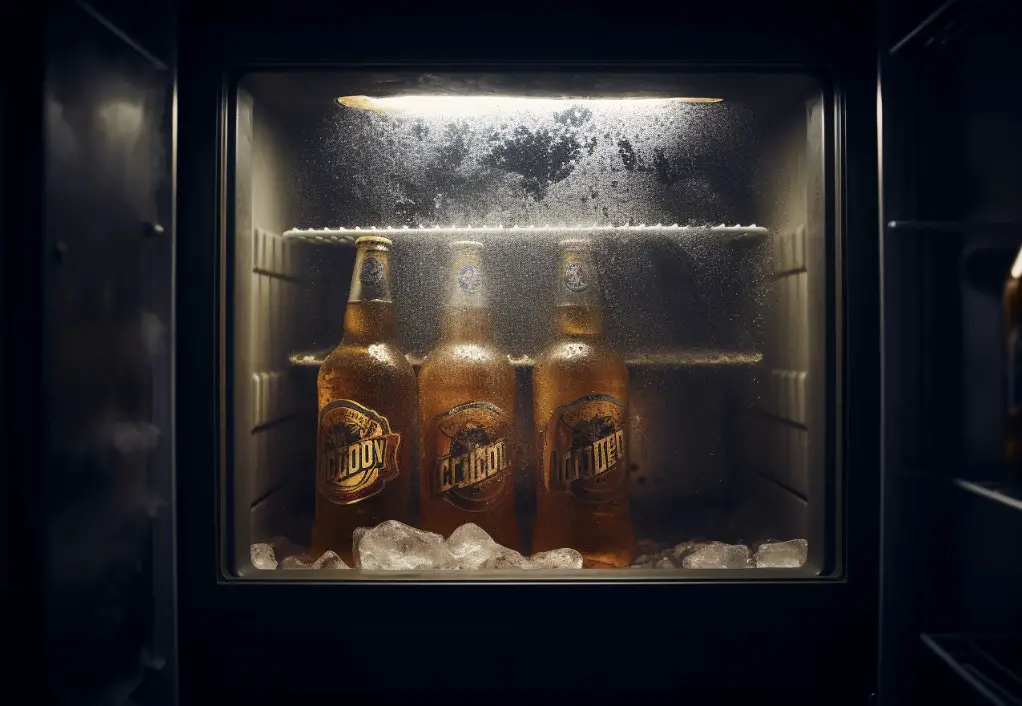
Remember, overchilling can mask the flavors. For instance, while a super-cold lager on a hot day is refreshing, an overly chilled stout might lose its rich, malty character.
Ciders and Premixed Cocktails: Sweet and Cool
These drinks have diverse compositions, but generally:
- Ciders: Similar to beers, they benefit from being cold but not overly so. Aim for 40-45°F (4-7°C). Again, this translates to roughly 30-60 minutes in the freezer.
- Premixed Cocktails: Depending on the ingredients and alcohol content, anywhere from 30 minutes to an hour should suffice. Always be wary of cocktails with high water content; they can freeze solid if left unattended for too long.
Liquors: The Freezing Point Dilemma
Liquors are where things get a bit tricky due to their varied alcohol content. The freezing point of alcohol (ethanol) is -173.2°F (-114°C).
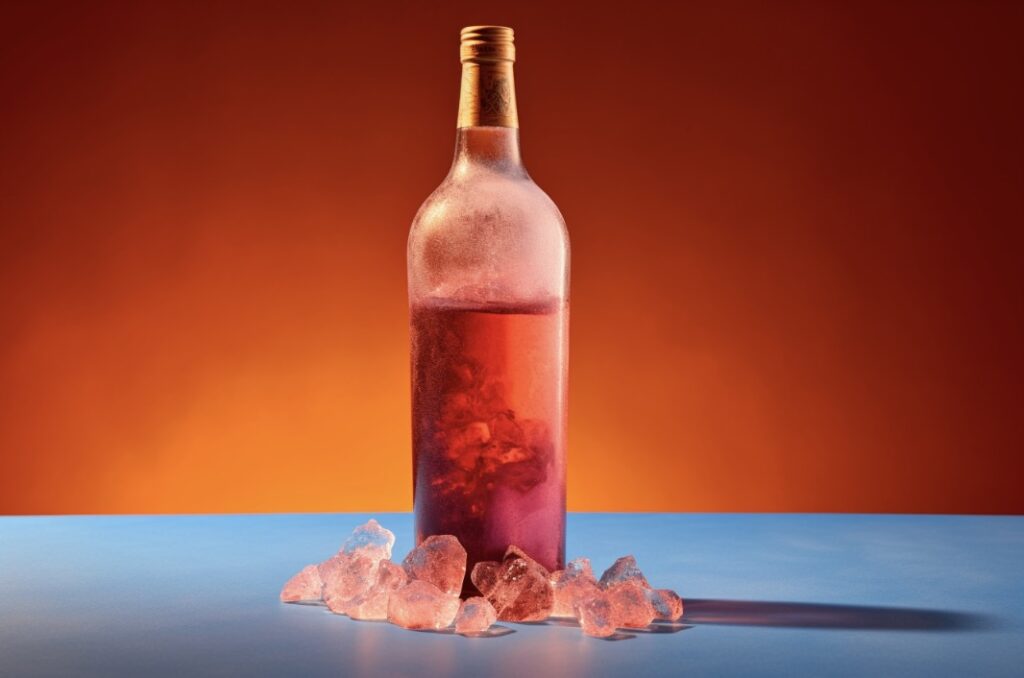
The higher the alcohol content, the lower the freezing point, which means many high-proof spirits won’t freeze in a typical home freezer. However, they will get colder and more viscous, which can be a delightful texture.
A general rule of thumb: About 1-2 hours in the freezer for liquors can give them a nice chill without freezing them solid. Always monitor them, as some lower-proof liqueurs might start to get slushy.
Thermodynamics of Freezing Mixed Liquids with Alcohol
When it comes to mixed drinks containing alcohol, the thermodynamics can get quite complex. Alcohol molecules interfere with the formation of ice crystals. That’s why your high-proof spirits won’t freeze solid but can become syrupy or viscous.

When water and alcohol are mixed, the freezing point of the solution is lower than that of pure water. This means that beverages with higher alcohol content will take longer to freeze and will never become solid in a standard freezer.
This science also applies to the icy layer you sometimes see on premixed cocktails or liqueurs with a lower alcohol content; it’s the water content freezing while the alcohol remains liquid.
From my personal experience, understanding this principle is vital, especially when crafting cocktails. There’s a delicate balance between achieving the desired consistency and temperature while maintaining the integrity of the drink’s flavors.
Soft Drinks: The Fizz Factor and Beyond
Soft drinks, often carbonated and sweetened, present a unique set of challenges and considerations when it comes to chilling. As anyone who has accidentally forgotten a soda can in the freezer knows, the results can be… explosive.
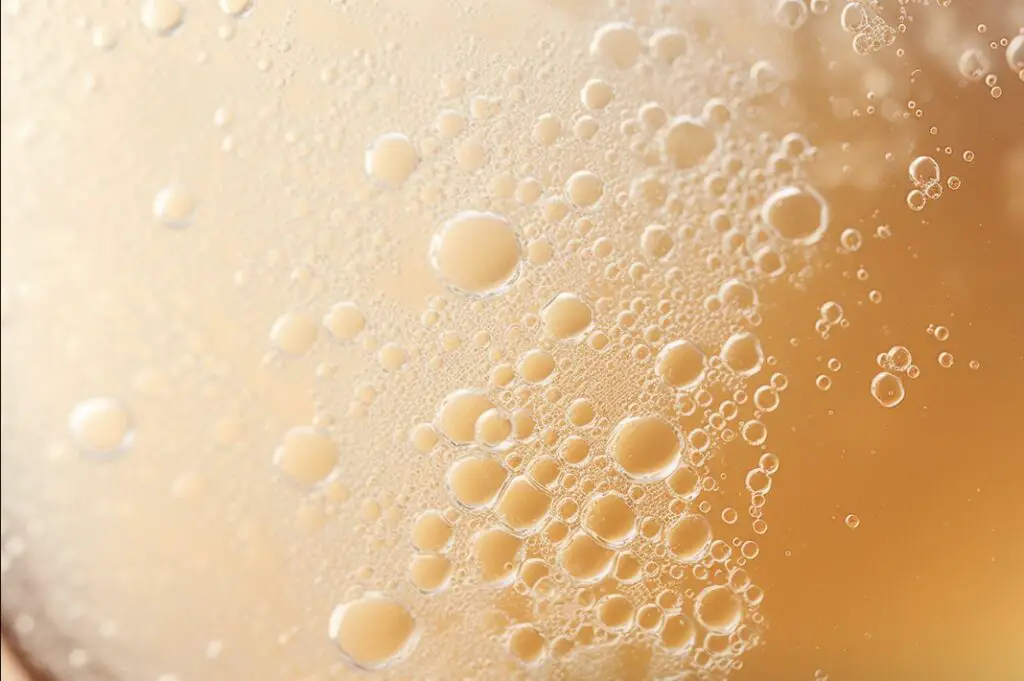
Soft drinks contain carbon dioxide (CO2), which is responsible for that satisfying fizz when you open a bottle or can. As the drink cools, it can hold more dissolved CO2, making it even fizzier. But, if it freezes, the expansion of the water content combined with the pressurized gas can cause a container to burst.
Ideal Temperature
The ideal temperature for most soft drinks lies between 35-40°F (1.5-4.5°C). This ensures that the beverage remains liquid, the CO2 stays dissolved, and the taste is refreshing. Given the average home freezer’s temperature, you’re looking at a timeframe of about 20-30 minutes to adequately chill a room-temperature soft drink to this range. However, it’s crucial to keep a close eye on them to avoid the aforementioned explosive scenario.
The Impact on Flavor
Temperature plays a significant role in the perceived flavor of soft drinks. Cold temperatures can dull the sensation of sweetness due to reduced activity of our taste buds. Ever wondered why some soft drinks seem overwhelmingly sweet at room temperature but just right when cold? That’s the science behind it.
It’s also worth noting that some specialty soft drinks, particularly artisanal sodas or drinks with natural ingredients, may have nuanced flavors that reveal themselves at different temperatures. While colder temperatures might make the drink more refreshing, a slightly warmer serving might allow you to pick up on subtle flavors that were otherwise masked.
Diet vs. Regular
An interesting observation from my years of beverage exploration is that diet soft drinks tend to get cold slightly faster than their regular counterparts. This could be due to differences in sugar content and the physical properties of artificial sweeteners. If you’re a diet soda aficionado, shaving a few minutes off the chilling time might be a good idea to prevent overcooling or potential freezing.
On a personal note, I’ve always been fascinated by the dance of bubbles in a freshly opened soda.
The right temperature not only enhances the flavor but, in my opinion, optimizes the effervescence. There’s something truly magical about sipping a perfectly chilled soft drink on a sweltering day.
It’s a blend of science and personal preference, a dance of temperature, bubbles, and taste.
Are There Faster Ways To Cool Beverages?
While a freezer can cool beverages, the primary medium of heat transfer is air, which isn’t as efficient as a liquid or solid.
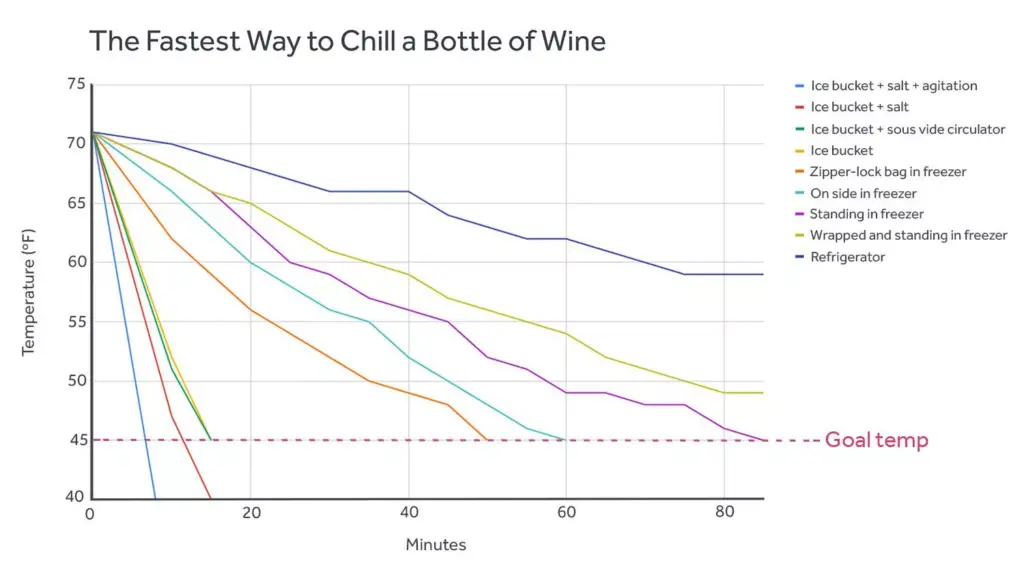
An ice bucket offers a faster cooling solution due to the direct contact and improved conductivity of the ice-water mixture.
Freezer:
- Air Cooling: Air is a relatively poor conductor of heat compared to liquids or solids. Hence, cooling in a freezer, which primarily uses air as the medium for heat transfer, is generally slower than immersing a beverage in a liquid.
- Convection: A freezer can cool more efficiently due to convection, where colder air sinks and displaces warmer air. This leads to a circulation of cold air around the beverage, increasing the rate of cooling somewhat.
Ice Bucket:
- Liquid and Solid Cooling: When you place a beverage in an ice bucket, you’re immersing it in a mixture of ice and water. Since both ice and water are much better conductors of heat than air, the beverage cools more rapidly. As the ice melts, it absorbs heat from the beverage, aiding in the cooling process.
- Surface Area: The greater contact area between the ice-water mixture and the beverage container allows for more efficient heat transfer.
Ice Bucket with Salt:
- Lowering Freezing Point: Adding salt to the ice-water mixture lowers the freezing point of the mixture. This means that the ice melts at a temperature lower than 0°C (32°F). As the ice melts in the salty mixture, it can become colder than the regular freezing point of water.
- Enhanced Heat Absorption: Because the ice-salt mixture can be colder than pure ice, it can absorb more heat from the beverage, thus cooling it more quickly.
- Phase Change: The act of the ice melting, especially in the salted mixture, involves the absorption of latent heat from the beverage. This process speeds up cooling.
Adding salt to the ice bucket enhances this cooling effect by allowing the ice to melt at temperatures below the usual freezing point, drawing even more heat away from the beverage in the process.
Conclusion: Chilling Your Drinks to Perfection
Chilling your drinks to the right temperature can elevate your drinking experience. From unveiling nuanced flavors in wine and beer to achieving the perfect texture in liquors, there’s an art and science to it.
Here are 10 key facts to remember:
- Most drinks need 30 minutes to an hour in the freezer to get cold.
- Red wines are best at 60-68°F (15-20°C).
- White wines excel between 50-60°F (10-15°C).
- Sparkling wines and rosés shine at 40-50°F (5-10°C).
- Lagers and Pilsners are ideal at 38-45°F (3-7°C).
- Ales, stouts, and porters should be between 45-55°F (7-13°C).
- Ciders are delightful at 40-45°F (4-7°C).
- Premixed cocktails’ chilling time varies based on ingredients.
- High-proof spirits won’t freeze in a regular freezer.
- Alcohol lowers the freezing point of mixed drinks.
A note from my tasting journey: The first time I truly appreciated the impact of temperature was during a wine tasting session in Bordeaux. We sampled the same red wine at three different temperatures. The differences were profound. This experience was a vivid reminder that temperature is not just about refreshment; it’s about revelation.
Whether you’re sipping on a robust red wine, a crisp lager, or a complex cocktail, remember to give it the respect it deserves by serving it at the right temperature.

